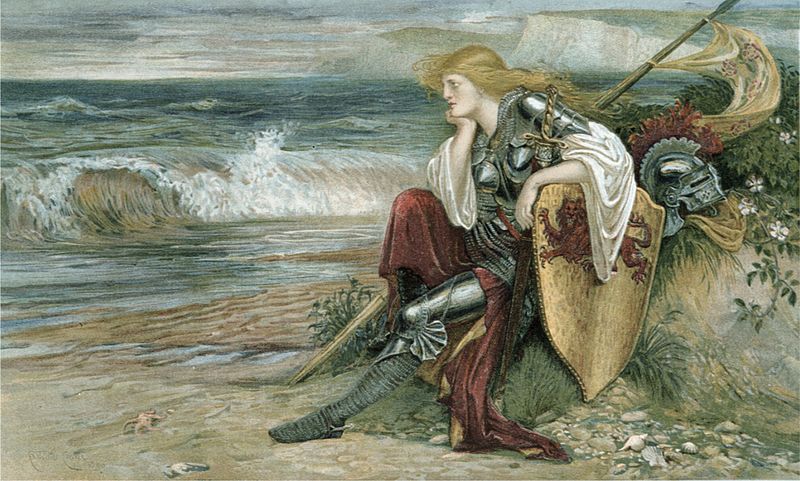The poem follows several knights who represent different virtues. In this way, the work is allegorical, as poet Edmund Spenser intended. He states the work is "enwrapped in allegorical devices" and aims to "fashion a gentleman or noble person in vertuous and gentle discipline." Britomart is the protagonist of Book 3, and represents chastity. She also meets Book 1 protagonist, the Redcross Knight, who represents holiness, Book 2 protagonist Guyon, representing temperance, Artegal, representing justice, and Arthur, representing "magnificence, the perfection of all virtues."
 |
| Walter Crane's Britomart from Wikimedia Commons |
Also of note is the fact that Britomart's name (as Britomartis) is recycled from a Minoan and Greek goddess of mountains and hunting. In Greek, she was a mountain nymph associated with Artemis. In Crete, she was known as a mother of mountains associated with gorgons, "double-axes of power," and snakes. She must have been a fearsome and dangerous figure, but this aspect of her character was also softened by her status as a "good virgin" goddess. This carries through into The Faerie Queene in that she is a figure of chastity and virtue, but also one of honor and power. Her name carries extra meaning as well, in that "Brit" denotes "Briton" and "Martis" could mean "of Mars," the Roman god of war.
Sources:
Mary Macleod: Stories from the Faerie Queene
Wikipedia: The Faerie Queene
Wikipedia: Britomartis
No comments:
Post a Comment